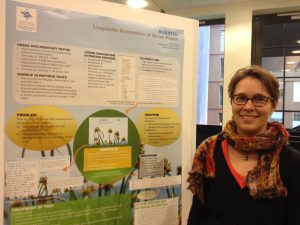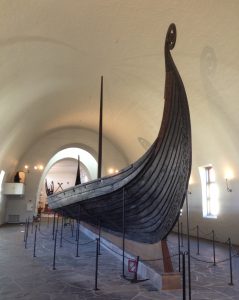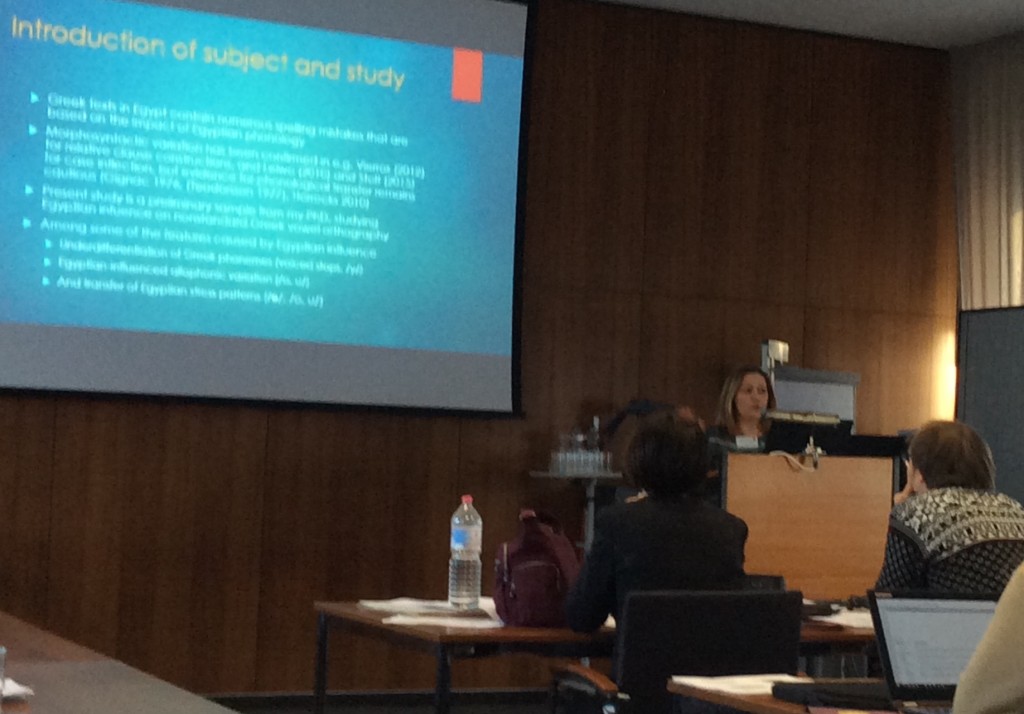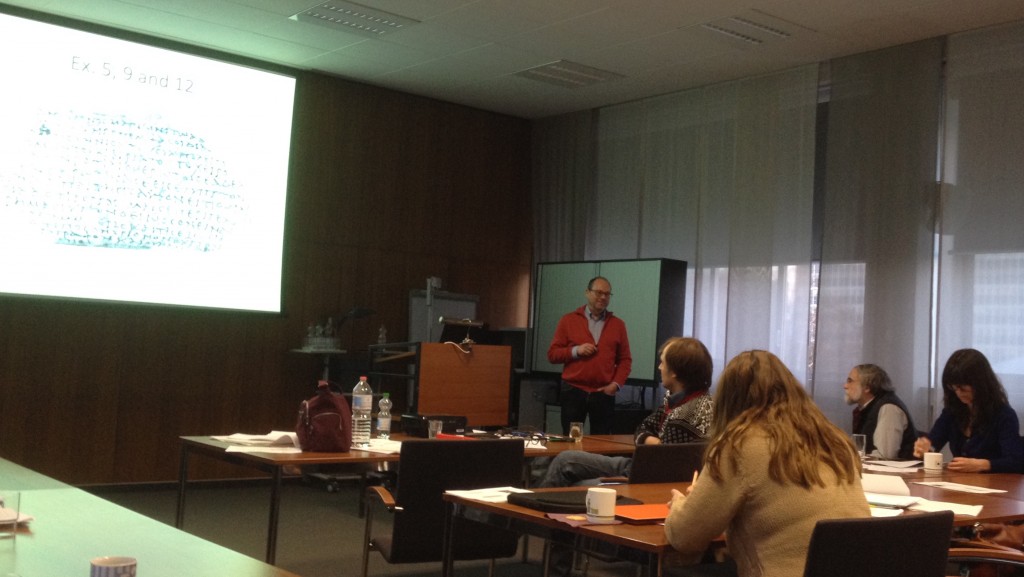This post belongs to the category ”better late than never”. In 8th of March, 2016, we were happy to host a guest lecture by Dr. Joanne Vera Stolk, who came to visit Helsinki from Oslo. Joanne defended her PhD thesis Case variation in Greek papyri. Retracing dative case syncretism in the language of the Greek documentary papyri and ostraca from Egypt (300 BCE – 800 CE) in late 2015 at Oslo University, so you can guess that we find her studies very relevant in our project.
If the standard is difficult to define, how could we define a mistake?
Joanne’s lecture was titled: ”How to use the dative case? Editorial regularizations in Greek documentary papyri.” She presented interesting examples on how an editor of a papyrus text may suggest that we should read, e.g., a dative instead of an accusative in one place, and another editor may suggest an opposite regularization in a similar place in a different text. Many such examples need of course careful analysis as respect to date and location, but they also offer interesting views on the fluctuating nature of ”standard” which the editors follow (or create). If half of the private letters from the fourth century use accusative in the health wishes and half use the dative, should we still consider the other one as ”standard”? All this is naturally highly important when one tries to trace so-called scribal mistakes. If the standard is difficult to define, how could we define a mistake? Therefore, the editorial regularizations are not to be taken at face value, but as signs of grammatical patterns where variation occurs and are thus worthy of further study. The disappearance of the dative case from Ancient Greek is par excellence one such development where fluctuation between dative and other cases need to be analyzed very carefully.
In the following week, it was our turn to visit Oslo. The Helsinki classicists were represented by Erik Henriksson and myself in the first meeting of the Nordic Association of Digital Humanities. I presented a poster on SEMATIA, and Erik, who is not officially part of our project but is a very-important-person for us, presented a poster on his PhD project on metrics in Late Greek poetry. Erik has helped me tremendously in building the Sematia tool, so it was very nice to have him there as well when presenting Sematia. The atmosphere in the DHN conference was very friendly and collegial, even though there were several overlapping sessions. (The programme can be found here.)
The preconference workshop ”Digital Classics. A hands-on Introduction to EpiDoc and Treebanking” organized by Federico Aurora was especially rewarding for us. In the same evening we enjoyed a guest lecture by Gabriel Bodard (ICLS) on Digital Classics and the generous hospitality of the Classics department. On Friday I was invited to give a working paper at the papyrology seminar. Thanks to the small but spunky group of papyrologists at Oslo (Anastasia Maravela, Joanne, Federico et al.) for inviting me and listening my thoughts on copies and drafts in papyri after a night of suffering from fever and sore throat. All in all, great two weeks!







